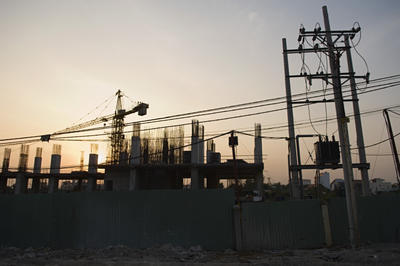Southeast Asia’s economies are extremely diverse. Living standards in Singapore, the richest country in ASEAN, are 40 times that of the poorest country, Myanmar. Singapore is a services-based economy; Brunei is oil-based; Malaysia and Thailand are fast industrialisers; Thailand and Vietnam are big agricultural exporters; Indonesia and the Philippines are net food importers; and Cambodia, Laos and Myanmar are still agrarian societies. Singapore is a free port in which trade is 400 per cent of GDP. At the other extreme, Myanmar has only recently started to open up: trade is only 31 per cent of GDP.
There are also huge gaps in the quality of regulation, institutions and the business climate. According to the World Bank, Singapore ranks first in the world for ‘ease of doing business’; Malaysia and Thailand are in the top 20; but the others are way behind. Compounding such economic diversity are stark differences in history, culture, geography, population, population density and — not least — political systems.
There are, however, elements of convergence across ASEAN countries. Integration with the global economy stands out. Since the 1980s, all ASEAN countries have liberalised trade and foreign direct investment. Average import-weighted tariffs are around 5 per cent for most ASEAN countries; six of the ten ASEAN nations have trade-to-GDP ratios of around 100 per cent or above. ASEAN has also become a regional production hub for parts and components in global manufacturing supply chains. This has knitted ASEAN and Northeast Asia — including China — in ever-tighter trade and production linkages.
ASEAN countries are in a much better position to weather global shocks than they were during the Asian financial crisis in 1997. Fiscal and monetary conditions are better, exchange rates are more flexible, there is much less exposure to short-term foreign debt, and bond markets are deeper.. The IMF forecasts growth at 5 per cent for the ASEAN-5 this year, in line with growth in the last few years. A slightly stronger post-crisis recovery in advanced economies, particularly in the USA, should give a marginal boost to ASEAN growth through exports.
But there are storm clouds ahead.
First, China’s growth slowdown has implications for ASEAN’s exports of intermediate products in global supply chains, its exports destined for the Chinese domestic market, and Chinese investments in ASEAN.
Second, ASEAN countries have seen a credit explosion as a result of loose monetary policies at home and around the world. Consumer debt has piled up. Asset and property bubbles are getting bigger. Tighter global monetary conditions, especially with ‘tapering’ by the US Federal Reserve and the likelihood of higher interest rates in the West, increase the risk of a mini-crash. Governments will have to bite the political bullet and wean themselves off loose money policies sooner rather than later.
Third, a decade of cheap-money policies and high commodity prices has engendered complacency in emerging markets. ASEAN is no exception. Governments have neglected structural reforms to reduce market distortions. These are now more visible with tighter global monetary conditions and falling commodity prices. Large markets for land, labour and capital remain unreformed. That is also true of much of the public sector. Liberalisation of international trade and investment has slowed down or stalled. Government red tape plagues the business climate.
Genuine ASEAN economic integration — the free flow of goods, services, capital and people within the region — would deliver huge gains, not least from deeper integration into global supply chains. That is the logic of the ASEAN Economic Community (AEC). The bulk of intra-regional tariffs have been abolished. Partial progress has been achieved on simplifying and harmonising customs procedures, cross-border infrastructure projects, and opening up ASEAN skies to low-cost airlines. A few sub-regional integration initiatives have made headway, notably the Greater Mekong Sub-Region and Iskandar–Singapore.
But, overall, the AEC is well behind its targets to reduce and abolish non-tariff and regulatory barriers in goods, services and investment. Most restrictions to intra-regional commerce lie here, not in tariffs and quotas ‘at the border’. Moreover, ASEAN monetary and financial integration is even weaker than it is in trade and investment, so far restricted to modest measures like the Chiang Mai Initiative.
This mixed record reflects the ‘ASEAN Way’ of ‘loose intergovernmentalism’ and ‘shallow integration’. But incremental progress, not a utopian leap to EU-style top-down, institution-heavy integration, is probably the best ASEAN can expect given its political realities.
Southeast Asia has made substantial economic progress because its governments have liberalised markets, thereby enabling integration into global supply chains. Now a ‘second generation’ of market reforms is needed to cope with external shocks and to take advantage of new regional and global opportunities.
The author is Visiting Associate Professor at the Lee Kuan Yew School of Public Policy, National University of Singapore.
A version of this article first appeared in The Strait Times, 8 May 2014.

